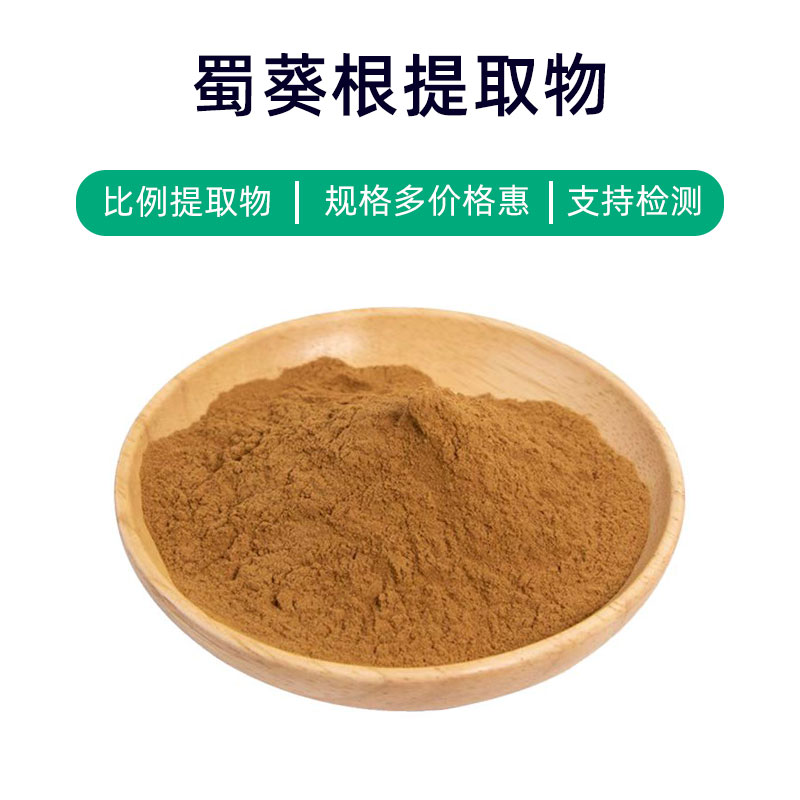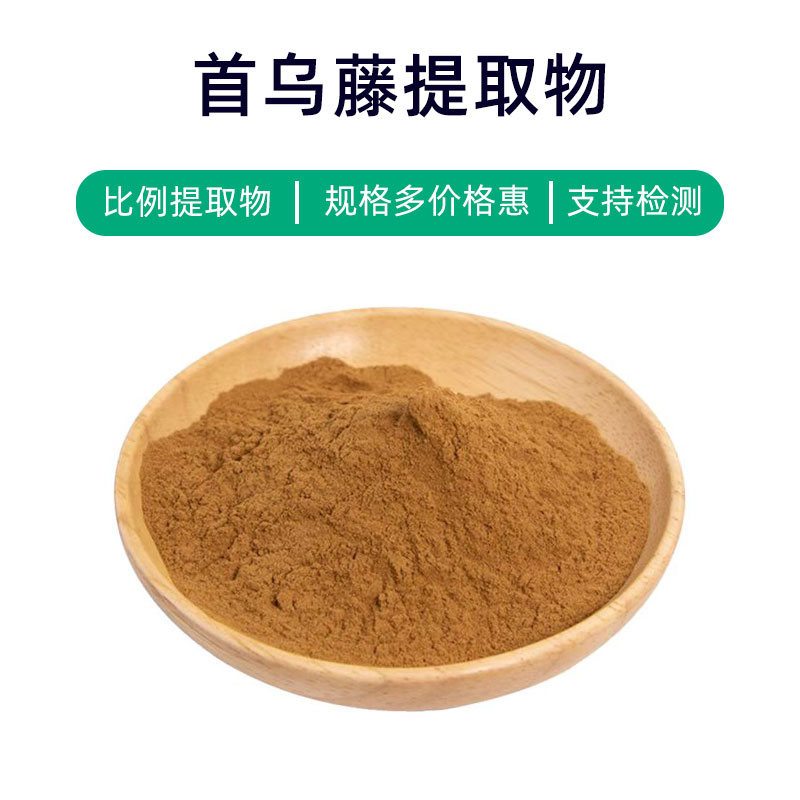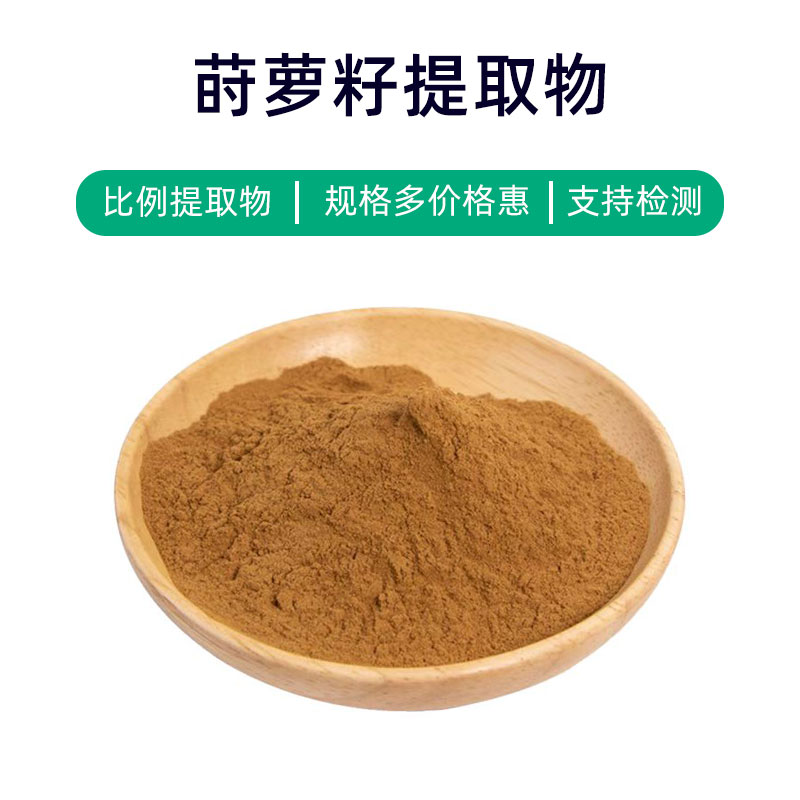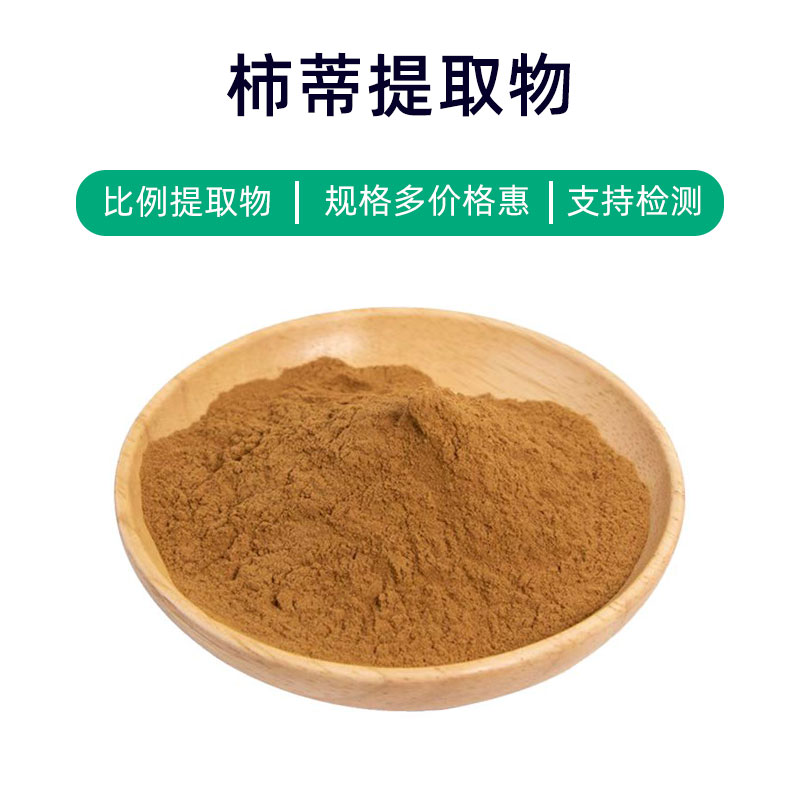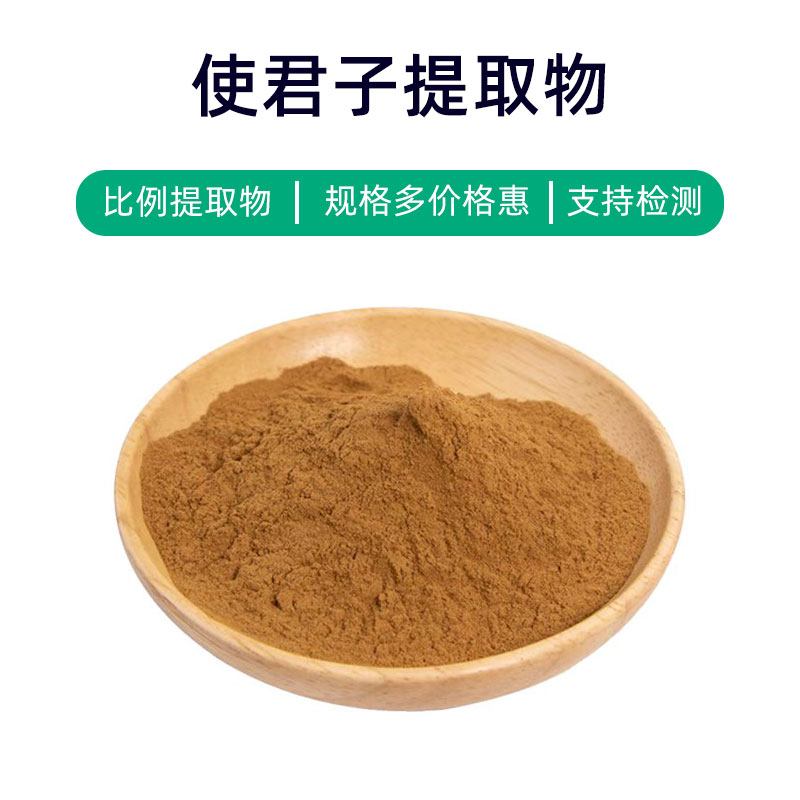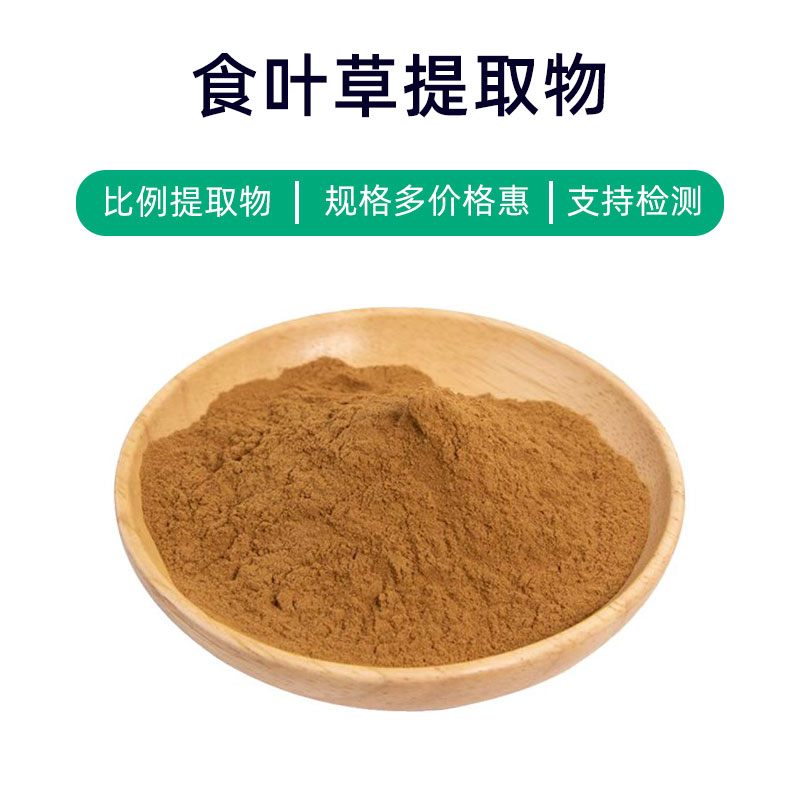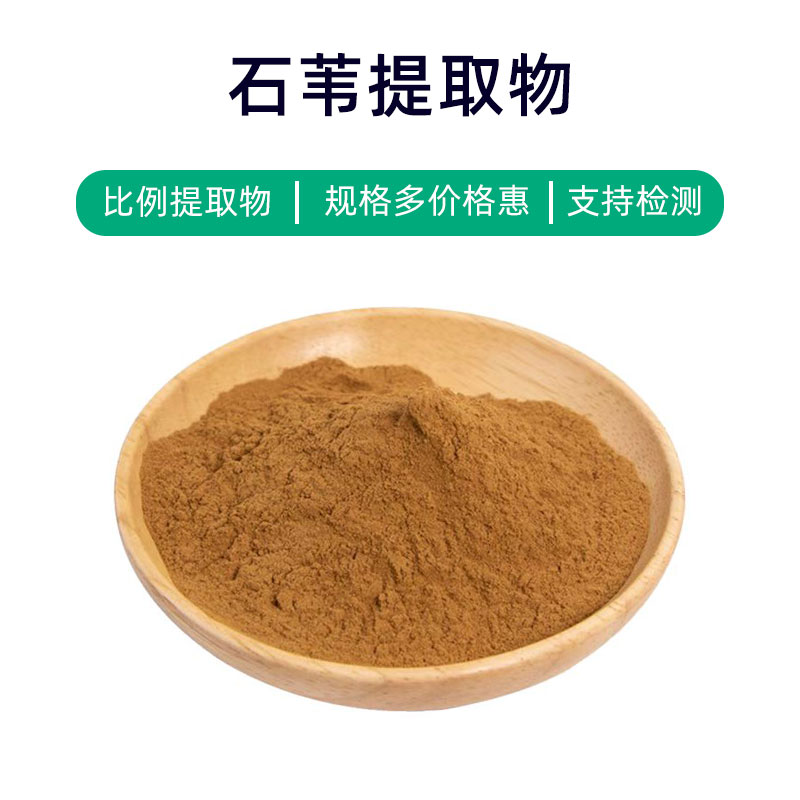Hibiscus Root Extract Product Introduction
Hibiscus root extract is a natural plant extract obtained from the roots of Hibiscus (Hibiscus sabdariffa). Its main components include flavonoids, polysaccharides, and organic acids, which provide multiple bioactive properties, including antioxidant, anti-inflammatory, and antibacterial effects.
In the pharmaceutical field, hibiscus root extract is widely used in traditional Chinese medicine formulations to regulate bodily functions and promote health. Its antioxidant properties help slow cellular aging and boost immunity. In the health supplement industry, it is commonly used in products such as health nutrition supplements and functional beverages to improve overall health.
In cosmetics, hibiscus root extract is often included as an active ingredient in skincare and cosmetic products for its antioxidant, moisturizing, and soothing effects. Its anti-inflammatory properties can relieve skin sensitivity, reduce inflammation, and promote skin repair and regeneration. Additionally, hibiscus root extract is utilized in hair dye products for its protective effects on hair and improvements in hair quality.
Overall, as a natural plant extract, hibiscus root extract offers a broad range of application prospects with significant value in pharmaceuticals, health supplements, and cosmetics.
Hibiscus Root Extract Production Process
The production process for hibiscus root extract typically includes the following steps:
- Raw Material Preparation: Fresh hibiscus roots are selected as the extraction material. Depending on production needs, the roots are cleaned, peeled, and chopped to prepare for the extraction process.
- Extraction: The pre-treated hibiscus roots are placed in extraction equipment, with an appropriate solvent (such as water or ethanol) added for the extraction process. Active components are extracted from the roots under suitable temperature and time conditions, resulting in an extraction liquid.
- Filtration: The extraction liquid is filtered to remove suspended solids and impurities, yielding pure extraction liquid.
- Concentration: The solvent in the extraction liquid is evaporated through heating or other methods, concentrating the extraction liquid to obtain the concentrated hibiscus root extract.
- Drying: The concentrated extract undergoes drying to remove residual moisture, resulting in a powdered form of hibiscus root extract.
- Grinding and Sieving: The dried extract is ground and sieved to ensure uniform particle size meets product specifications.
- Packaging: Finally, hibiscus root extract is packaged according to customer requirements, typically in sealed packaging to ensure product quality and stability.
Each step of the production process requires strict control of operational parameters to ensure stable product quality and compliance with relevant quality standards and regulations.
Hibiscus Root Extract Effects and Side Effects
Hibiscus root extract, as a natural plant extract, has various effects and benefits in medicinal and health fields:
- Antioxidant Properties: Rich in natural antioxidants such as flavonoids and vitamin C, hibiscus root extract helps eliminate free radicals, protecting cells from oxidative stress damage, thereby slowing the aging process.
- Anti-inflammatory Properties: The polysaccharides in hibiscus root extract possess good anti-inflammatory activity, alleviating inflammatory responses and symptoms associated with inflammatory diseases.
- Immune Regulation: Studies suggest that hibiscus root extract can modulate immune system function and enhance immunity, helping to prevent infectious diseases.
- Blood Sugar Regulation: The polysaccharide components can lower blood sugar levels, promoting insulin secretion and improving insulin resistance, aiding in blood sugar control.
- Liver Protection: Active ingredients in hibiscus root extract have certain protective effects on the liver, helping to reduce liver damage and promoting liver cell regeneration, providing auxiliary treatment for liver diseases such as hepatitis and fatty liver.
- Antibacterial and Antiviral Properties: Natural compounds in hibiscus root extract exhibit antibacterial and antiviral activities, inhibiting the growth and reproduction of pathogenic microorganisms, thus helping to prevent and treat infectious diseases.
- Digestive Promotion: Components like cellulose and tannins in hibiscus root extract help stimulate digestive fluid secretion, enhance intestinal peristalsis, improve digestive function, and prevent constipation and indigestion.
- Anti-allergic Activity: The bioactive substances in hibiscus root extract have certain anti-allergic effects, alleviating symptoms of allergic diseases such as allergic rhinitis and skin allergies.
While hibiscus root extract offers various benefits, it’s essential to note individual differences and possible allergic reactions during use. It is advisable to consult with a healthcare professional before use, avoiding excessive or prolonged usage to prevent adverse reactions.
Hibiscus Root Extract Application Scenarios and Dosage
Hibiscus root extract has wide applications in the fields of medicine, food, and cosmetics. Below are its applications and recommended dosages in different areas:
- Medical Applications:
- Antioxidant and anti-inflammatory properties make it commonly used in the formulation of various health products and medications.
- Used to treat digestive system diseases: can be used to prepare digestive regulation agents and drugs for gastrointestinal ulcers.
- Antibacterial and antiviral properties: can be used to manufacture antibacterial drugs for treating infectious diseases.
- Liver protective effects: suitable for auxiliary treatment of liver diseases such as hepatitis and fatty liver.
- Immune function modulation: can be used to enhance immune system function and prevent infectious diseases.
- Food Applications:
- Antioxidants: used as a natural antioxidant in food to extend shelf life.
- Nutritional supplements: used in health food preparations to enhance overall health.
- Flavoring agents: can be used to extract natural flavor compounds, enhancing food taste.
- Cosmetic Applications:
- Antioxidant and moisturizing: added to skincare products for its antioxidant and moisturizing effects, helping to protect against environmental damage and keep skin hydrated.
- Anti-inflammatory calming: used to formulate products for soothing sensitive skin, alleviating skin inflammation and redness.
- Oil control balancing: suitable for oily skin, effectively controlling oil secretion and tightening pores.
Dosage Recommendations:
- Medical Use: Generally used according to the dosage suggested by physicians or medication instructions, typically in the form of tablets, oral liquids, or topical ointments. Dosage varies based on condition, age, etc.
- Food Use: The amount added generally depends on the type and purpose of the food, typically 0.1-1 gram per kilogram of food.
- Cosmetic Use: Based on product instructions, it is generally recommended to apply an appropriate amount on clean skin and gently massage until absorbed.
Precautions:
- Individuals with allergies to hibiscus root extract should use with caution and perform a skin test before use.
- Follow the dosage and methods outlined in the instructions, avoiding excessive use.
- If adverse reactions occur, discontinue use immediately and consult a healthcare professional.
Hibiscus Plant Introduction, Distribution, and Growth Environment
Hibiscus root extract is derived from the hibiscus plant (scientific name: Abelmoschus moschatus). Here’s a detailed introduction to the plant, its distribution, and growth environment:
Plant Introduction:
Hibiscus (Abelmoschus moschatus), also known as musk mallow, is a perennial herbaceous plant in the Malvaceae family. It features upright stems that can reach up to 2 meters in height, palmately lobed leaves, large yellow flowers, and broad petals. The fruit is a capsule, and the seeds are brown, oval-shaped, with a fragrant aroma.
Distribution:
Originally native to the Indian subcontinent, hibiscus has since been introduced to China and other regions. It is primarily distributed in tropical and subtropical areas of Asia, Africa, and America, including India, China, Brazil, Mexico, and others. In China, hibiscus is widely found along the Yangtze River basin, southern provinces, and the southwestern region.
Growth Environment:
Hibiscus thrives in warm, humid climates and nutrient-rich soils with high light requirements. It can grow at elevations below 1,000 meters in hilly, flat, and roadside areas. While it can tolerate some drought, it prefers moist environments, commonly found along riverbanks, streams, and rice paddies. It can also withstand certain levels of barren or saline-alkaline soils and has strong adaptability.
Hibiscus has a short growth cycle and grows rapidly, typically flowering and fruiting approximately 45-50 days after sowing. Under suitable climatic and soil conditions, hibiscus can grow for multiple years, producing flowers and fruits 2-3 times annually.
Overall, hibiscus, as a common herbaceous plant in tropical and subtropical regions, grows quickly under favorable climatic and soil conditions, providing abundant resources for extracting hibiscus root extract.
Hibiscus Root Extract Processing and Storage
The processing of hibiscus root extract generally includes the following steps: First, fresh hibiscus roots are cleaned and peeled, then chopped into appropriately sized pieces. Next, effective components are extracted using suitable extraction methods (such as water or alcohol extraction). Following extraction, further processing steps like filtration, concentration, and drying are carried out to obtain the extract. Lastly, the extract is packaged, labeled, and stored in a cool, dry, and ventilated area, avoiding direct sunlight and high temperatures to maintain its stability and quality.
For storage, hibiscus root extract should be stored in a well-sealed, cool, dry place, away from direct sunlight and high temperatures. It's crucial to avoid moisture exposure to prevent mold and spoilage. Additionally, care should be taken to prevent contact with harmful chemicals and odorous substances that could affect its quality. Regularly check the extract's appearance and smell to ensure it is stored properly.
Monica Sun is a seasoned expert in the plant extraction industry with over a decade of experience in research and production. She specializes in the extraction and purification of plant active ingredients, focusing on driving innovation in natural product applications. Monica has participated in the development of multiple functional plant extracts, delivering high-value natural raw material solutions for the health food, pharmaceutical, and dietary supplement sectors.

